This is a reblog from Halo Waypoint:
By Josh Holmes
This marks the first in a series of developer blogs that we’ll be publishing here on Waypoint. These blogs will feature contributions from members of the Halo 5: Guardians Development Team and will cover a wide variety of different topics. Similar to The Sprint, our goal is to provide more insight into the development process for Halo 5 and the creative and technical decisions that are a part of it.
Co-op Campaign in Halo 5: Guardians
Co-operative play has always been a big part of Halo, allowing two or more friends to play through the campaign together. Over the years I’ve spent countless hours playing Halo co-op, as have the majority of us here at 343 Industries. It’s a source of endless fun, particularly because of the emergent play that stems from having a group of players interacting with the Halo sandbox. Yet at its core, Halo’s campaign was originally built to be a single-player experience, first and foremost. So when you joined a friend in their campaign session, you were coming along for the ride and helping to lighten the load. Mechanically, the game was designed with the single-player experience in mind and so the narrative perspective of campaign also remained focused on telling the story of a lone hero.
That changes with Halo 5: Guardians as we have committed to co-operative campaign at a fundamental level. This creative pillar has influenced many decisions throughout the game’s technology and design. While you can still expect the same great single-player experience that Halo campaigns have been known for, engaging in co-operative play gives the campaign a new level of depth and richness.
Within the campaign for Halo 5 there are two distinct modes of play – solo and co-operative – and each mode has its own separate save file. When you start a co-op session, you control the leader of each Fireteam (The Master Chief or Spartan Locke). From there you can invite friends to join your session, and they do so seamlessly. Co-op games run on dedicated servers, allowing friends to seamlessly join and take over control of another member of your Fireteam. There is no interruption to the play experience. The new player simply joins the game, chooses a character (from one of the male or female teammates), and assumes control. Any achievements, collectibles or skulls unlocked during a co-op session are granted to all of the players present at that time. If at some point in the session a friend needs to leave, they can simply drop-out without interruption and the AI takes over seamlessly, so you can continue with your game.
Fireteam AI
Supporting this seamless drop-in/drop-out co-op experience is our new Fireteam AI system. Throughout the campaign, there are always four Spartans active. When playing a solo game, the three other members of your team are controlled by Fireteam AI (or “musketeers” as we’ve nicknamed them internally). Fireteam AI is designed to be completely autonomous. When controlled by AI, your teammates will accompany and support you, navigating the environment and reacting dynamically throughout combat.
As a Fireteam leader (Chief or Locke), you also have the ability to give simple commands to your AI-controlled teammates using the new Orders System in Halo 5. Fireteam orders give you more discrete control over your team’s actions to increase their effectiveness in battle. Some of the orders available include: Attack My Target, Go To Location, Use Vehicle (or turret), Pick Up Weapon and Revive Teammate (more on Revive later). Orders are contextual and initiated through a single button press (up on the D-pad). Simply place your reticle over a location, object or target and press the Orders button. The order issued changes depending on what you’re looking at. Our goal is to keep the Orders System simple and intuitive within the flow of Halo combat. We are not building a tactical squad-based shooter but we want to provide players an optional layer of logical control to enable new tactics in battle. And of course if you choose not to use orders, your Fireteam AI will operate just fine on their own. They are Spartans, after all.
Expanding Our Cast of Characters
When we set out to tell the story of Halo 5: Guardians, we were continuing the Master Chief’s saga. At the end of Halo 4 we left the Chief in a state of contemplation. He had lost his closest companion in Cortana and was finally being forced to consider his place in this new world. For the first time since he was trained as a Spartan, John began to really consider what it meant to be not just a soldier, but also a human. In Halo 5 we wanted to examine the Chief more closely and doing so meant applying a different emotional perspective, for both the character and the player.
We also wanted to expand our existing cast of characters in our story and bring new Spartans into the fold. To support our ambitions for co-operative campaign, we need four Spartans to be present and available for play at all times. Having a consistent set of teammates allows for seamless drop-in/drop-out co-op, it lets us maintain consistent game mechanics between solo and co-operative play and it expands our opportunities for storytelling as the characters interact with one another and their surroundings. Depending on which team member you are controlling at any given time, your perspective on the story may shift as you experience slight contextual differences in dialogue. It’s a subtle thing and the core of the story always remains the same, but it’s something we hope will be appreciated by fans and add to the replay value of the co-op campaign.
Two Distinct Teams
With Halo 5: Guardians we are telling story from two different perspectives, with opposing protagonists. The Master Chief and the other members of Blue Team are some of the few remaining members of the SPARTAN-II program. Proven veterans of the Human-Covenant war, they’ve known one another since childhood and trust one another on a deep level. In that regard, they’ll help the Chief fill a void of companionship left in Cortana’s passing.
Spartan Locke and Fireteam Osiris are a newly minted squad of Spartan-IVs assembled by the UNSC and tasked with tracking down the Master Chief when he and Blue Team go AWOL early on in the game. Throughout the course of the campaign the action will shift between these two teams. The Chief’s missions represent vital turning points within the story and pose questions the player will answer while playing as Locke and Osiris. Only by playing back and forth between the two teams will the complete story be told.
We’ve deliberately designed these two teams to provide visual contrast with one another. Blue Team have a heavier, more weathered feel. Their technology is proven, reliable, and practical in nature. Fireteam Osiris represent a new generation of Spartans. Their armor is sleek and modern, technologically advanced and displaying less wear.
These design cues carry into the play experience through the look and feel of the Heads-Up-Display for each character. From a first person perspective, it’s challenging to convey the differences between characters. Having unique HUDs for each of our eight characters allows us to convey a sense of identity and personality through the visual design.
Each character’s HUD has been painstakingly designed by our artists to reflect the visual language of that particular Spartan. So Locke’s HUD has aggressive lines that follow the curvature of his visor while Linda’s enhanced optics are represented in muted tones that reflect her armor palette.
From a play perspective it was important to maintain a consistent set of core gameplay abilities between all characters. We don’t want players to need to re-learn controls when they move between teams or from character-to-character. While the core gameplay and controls remain the same, each character has a unique set of starting Loadout weapons. Linda has her signature Sniper Rifle, while the Chief maintains his classic AR. Naturally, all of the characters can acquire and use other weapons and vehicles along the way. There are also subtle differences between the characters in terms of attributes. For example: Kelly is the fastest member of Blue Team, while Tanaka has increased motion tracker range.
New Mechanics in Campaign
To support team and co-operative play in Halo 5: Guardians we have introduced a new Revive mechanic. This gives players a second chance in combat and creates opportunities for team members to support one another. So how does it work? When a Spartan takes too much damage in combat, they go into a “downed” state. Once downed they can be revived by a teammate, but only for a limited time before they die. While downed you can call for a teammate to revive you. Players will hear you call out and see your icon flashing on their screen, letting them know how long they have before you die.
As a player you can revive your teammates, or if you are the Fireteam leader (Chief or Locke), you can give the order to revive someone. AI-controlled Fireteam members will immediately attempt to revive their downed teammates, though they may die trying. If you die before you can be revived, you will respawn once a player-controlled member of your team makes it to a safe location, free from combat. If every player-controlled member of your team is killed in action, you will wipe back to the previous checkpoint. This adds a layer of risk/reward to the traditional checkpoint system used in prior Halo games, and in co-op, encourages better teamwork and sportsmanship.
One significant mechanical difference between the two teams is the new Tracking ability that is available to Fireteam Osiris.
The Artemis Tracking System is a new piece of ONI technology deployed with Fireteam Osiris in their search for the Master Chief. Tracking allows the player to “ping” the surrounding area by sending out a waveform that highlights objects of interest. Tracking can be used to locate weapon caches, vehicles, collectibles and narrative drops throughout the campaign. It also highlights tactical opportunities on the battlefield. See that auto-turret and nearby generator? Perhaps they can be reactivated and brought online to help repel enemies. The enemy force field standing in your way? Hack the nearby control point to bring it down. That metal vent on the top of a secure building? Use the new Ground Pound ability to break through and gain access to the goodies inside. Each of the missions in campaign have been designed to offer a variety of options and opportunities for play, and Tracking is as means of exposing them to players. And again, while all eight Spartans will move and feel identical, Tracking adds a layer of personality and story to both perspectives, with the Spartan-IIs being less reliant on tech, and more on their own experience.
Evolving Campaign for a New Generation of Console
The additions of Fireteam AI, Orders and Revive have had a major impact on the design of encounters throughout our campaign. Along with the heightened focus on co-operative play, these changes have challenged a conventional approach to balancing Halo combat. They have required us to revisit the tuning on every enemy, vehicle and weapon in the game, testing across all difficulties and player counts. Enemies are faster, more responsive and generally more lethal. Many have been given new behaviors to make them more effective in dealing with a team of Spartans.
The scale of campaign experience that we are delivering with Halo 5: Guardians is far beyond any previous Halo game. With co-operative play as a focus, it has meant creating larger spaces with multiple vertical levels and intersecting pathways. Teammates are encouraged to spread out and explore, seeking advantageous positions from which to support one another.
Not only has this increased the scale of the environments themselves, but it requires a greater number of enemies to be active in any given area. Building encounters with co-op play in mind has meant an increase in the density of foes. Because players have more freedom in splitting up and exploring the environment, we can have dozens and dozens of active antagonists, all systemically-driven and reacting in real-time to the world around them. This is where the sandbox nature of Halo really shines.
The decision to remove split-screen support from Halo 5: Guardians was one of the most difficult ones we’ve ever had to make as a studio. We know that for many of our fans, Halo has meant playing together with friends in the same room. We all have great memories of past Halo split-screen multiplayer matches. To move Halo’s gameplay forward and deliver a true next-gen experience, tough choices had to be made. Our decision was driven by a desire for scale, fidelity and focus to ensure that we would deliver the best quality experience possible. With Halo 5 we are delivering massive scale environments, improved AI behavior, increased visual and gameplay fidelity… something that truly takes advantage of a new platform. Many of our ambitious goals for Halo 5 would be compromised in a split-screen setting and the time spent optimizing and addressing split-screen-specific issues would take focus from building other parts of the game. Game development is a balancing act of resources, time and technology, and in this case we made the tough decision to sacrifice something that’s been near and dear to us all.
We are telling a story at a truly galactic scale with Halo 5’s campaign. A story big enough to fill the worlds we’ve created for it. This is a campaign that has been designed from the ground up to support co-operative play with an ensemble cast of characters, and is supported by the gameplay mechanics, scale, features and technology required to make it sing. We’re really pleased with the way it’s shaping up and we can’t wait for you guys to try it, and hopefully enjoy it as much as we are.

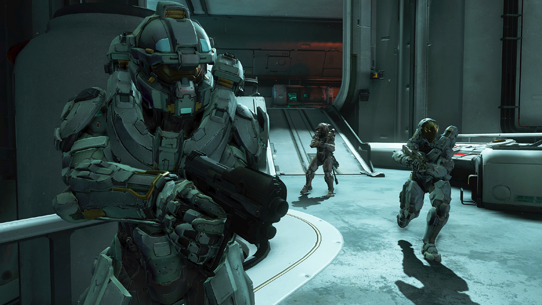
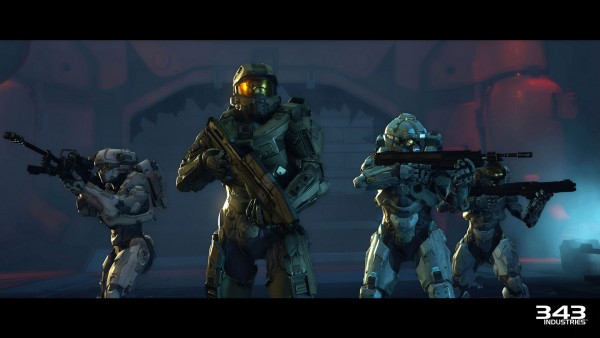
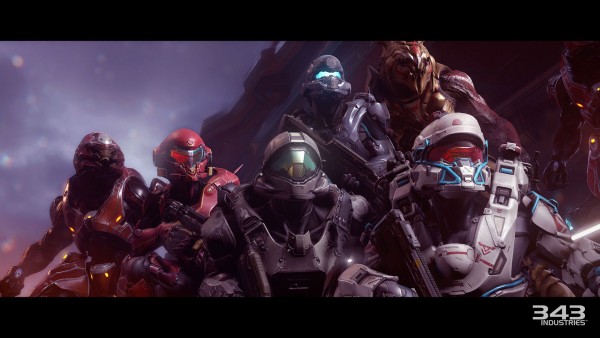
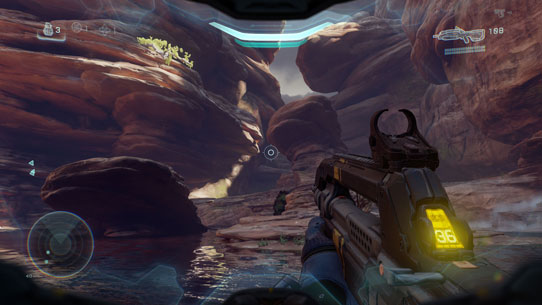
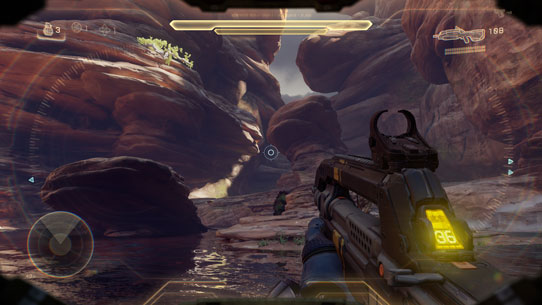
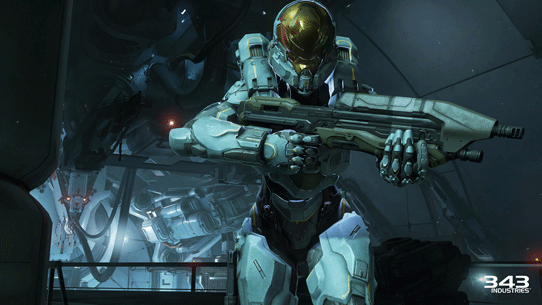
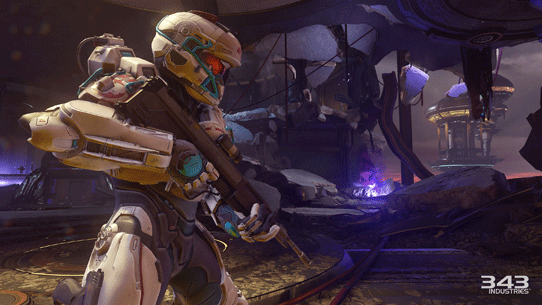
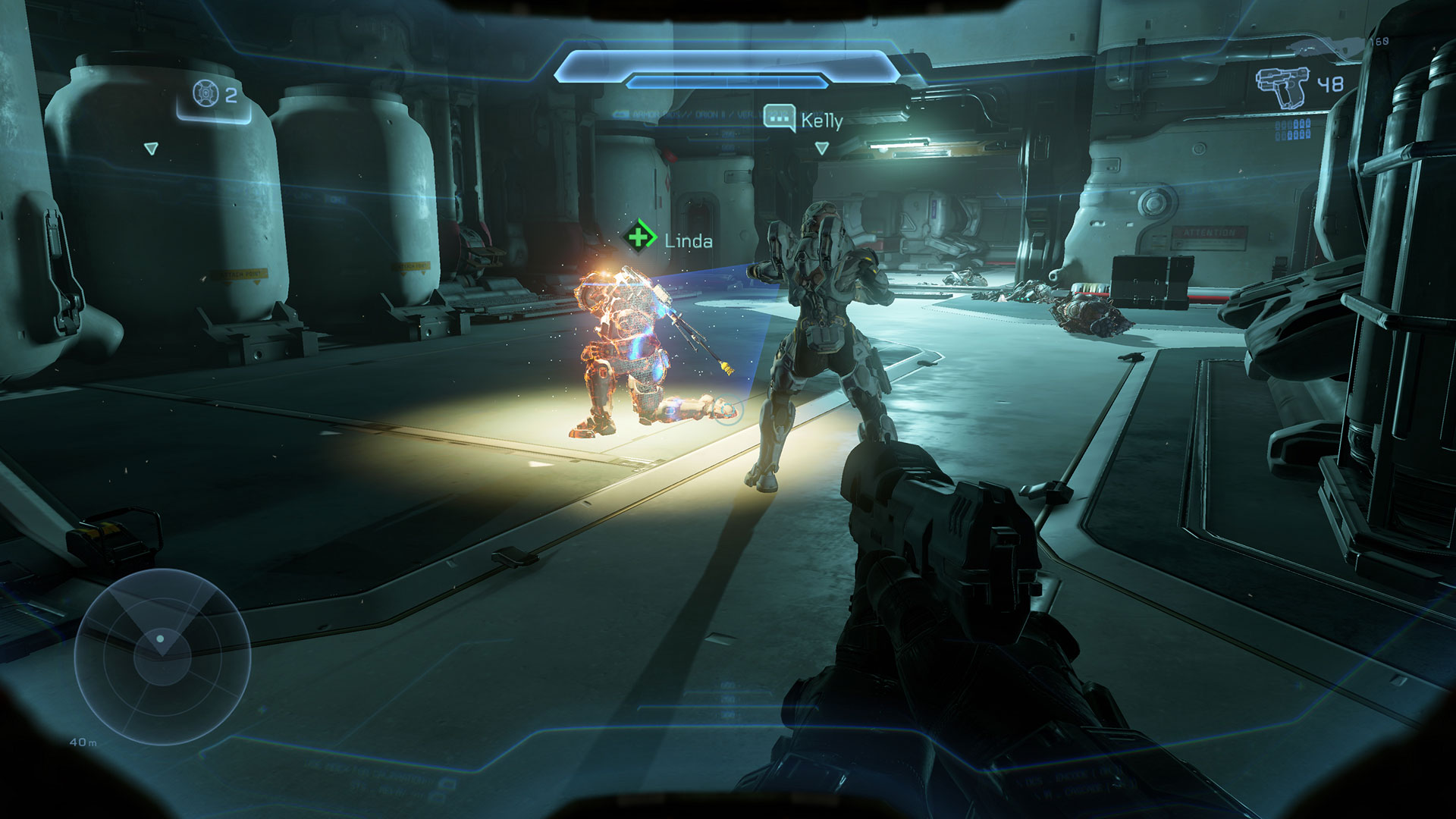
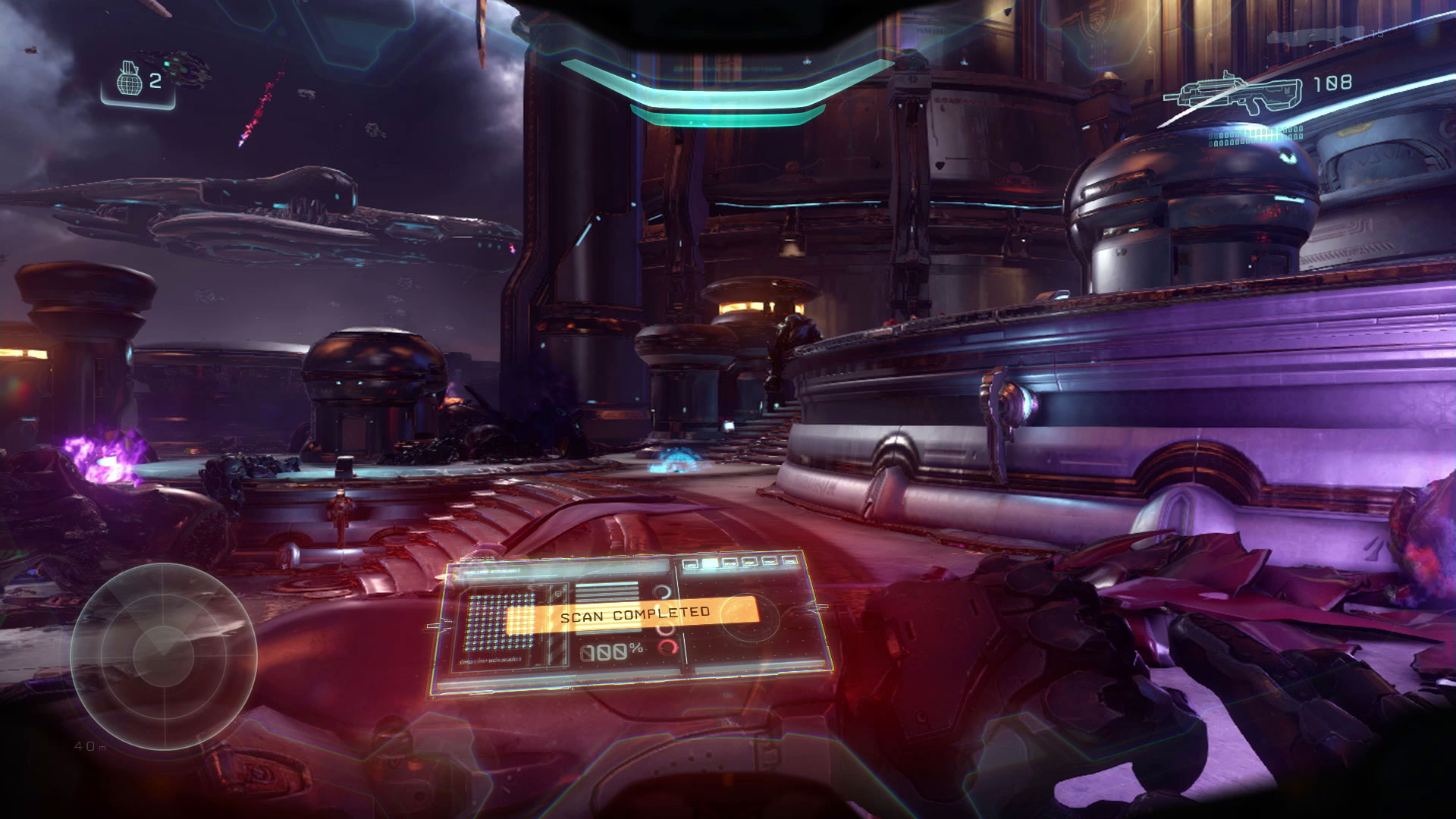
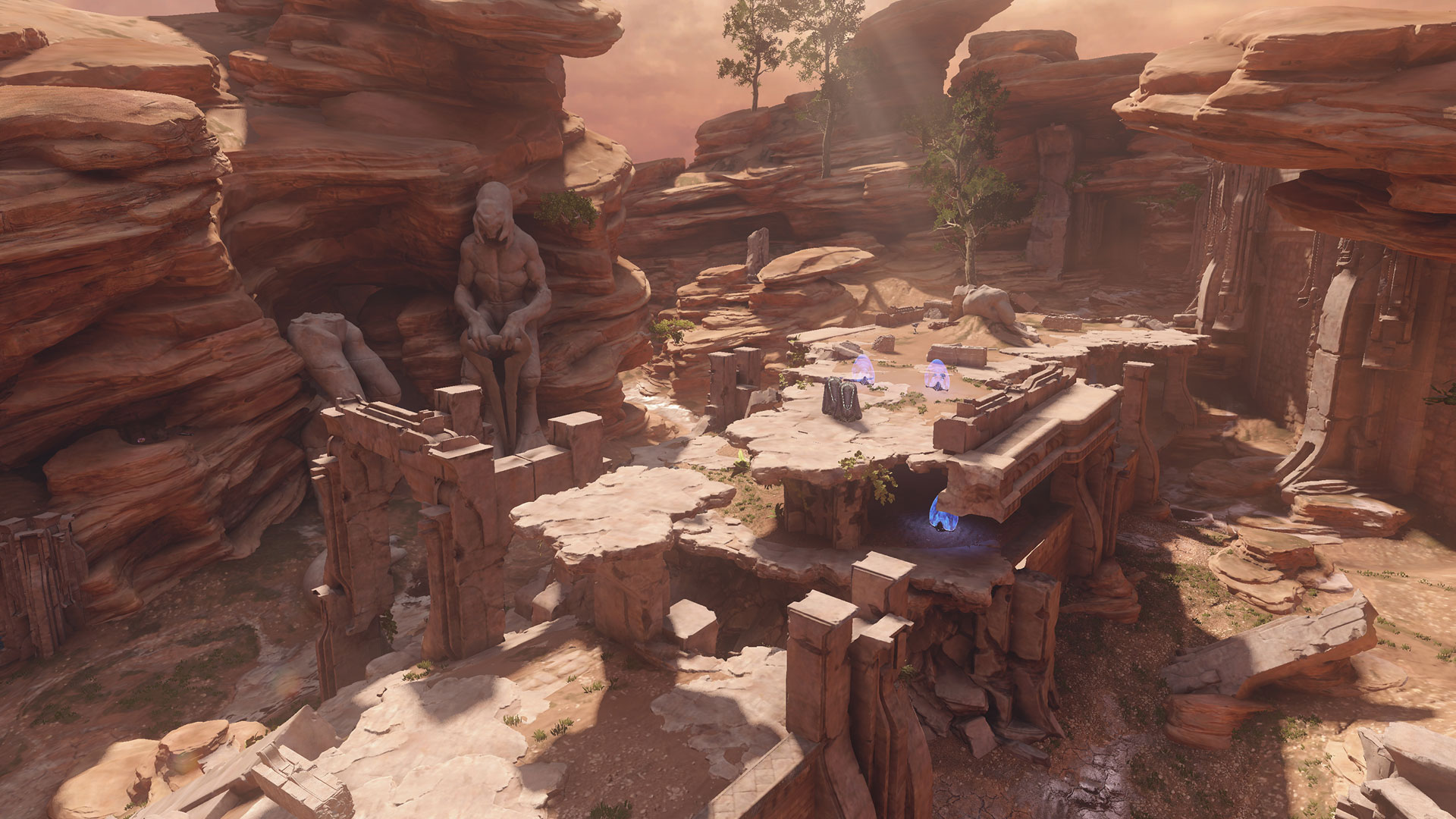
Nice!
Unique HUD designs to play off of each characters personality? Sign me up!
Kelly’s faster?! Each spartan getting unique attributes?! Woo!